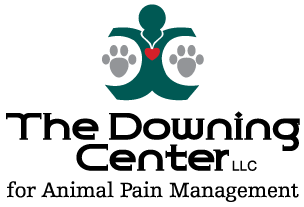Illustrated Articles
-
Cancer is the result of genetic damage to cells. While some breeds may be more predisposed to certain forms of cancer, age-related changes and environmental factors are also often at fault. Some tests can be performed to determine the type of cancer present. Treatment options are available but do not necessarily cure cancer.
-
Cat grass can be one of many cereal grains such as oat, wheat, barley, alfalfa, or rye. The grass is planted and cultivated indoors and presented to the cat as a supplement to the existing diet. Eating grass targets a cat’s natural instinct to forage and provides entertainment as well as nutritional and digestive value.
-
Whipworms are intestinal parasites measuring about 1/4 inch (6 mm) in length. They live in the intestinal tract of cats where they can cause severe irritation. Whipworm infection results in watery diarrhea, weight loss, and general debilitation. Fecal testing will not detect every infection. Whipworm infection in cats is rare in North America but cases appear to be rising.
-
Whipworms are intestinal parasites that cause bloody diarrhea. They are diagnosed by finding eggs on microscopic examination of the stool. These eggs, however, are difficult to find. Several medications are effective against whipworms. All medications must be repeated monthly for three months to clear the infection.
-
The terms 'whistler' and 'roarer' are used to describe horses that make an abnormal respiratory noise during exercise. The noise is heard during inspiration (i.e., breathing in) and may be anything from a high pitched soft whistle to a harsh 'roar'.
-
Dogs were built to chew. That is a fact. Bones can lead to a number of health problems from minor injuries to severe illness. Our job as pet parents, is to provide them with chewing options that do not put them in jeopardy. Happy chewing!
-
A cat’s ability to smell is far more advanced than ours. The Jacobson’s organ, located inside the nasal cavity, opens into the roof of the mouth behind the upper incisors and serves as a secondary olfactory system designed for chemical communication related to mating. Cats use their keen sense of smell, along with a visual assessment, to provide vital information about a new feline acquaintance. The way cats sniff rear ends can establish which of two cats is dominant and set the foundation of their relationship.
-
Turning around before bedtime has its origin mostly in evolutionary history where cat ancestors were practicing these habits for health or protection. These innate habits remain in their genetic code to this day but if your cat is seeming to be doing it excessively, it could be a sign of underlying medical problems, such as arthritis of neurological disorders. Contact your veterinarian if your cat appears to have difficulty settling down.
-
Noses vary in size and shape in the canine world, but regardless of what they look like, they are important to survival. So pay attention to your dog’s nose to help him stay healthy. And enjoy those warm moist snuggles your dog’s nose provides you. A dry nose is not a guarantee of illness. Too much moistness could be a sign of a problem.
-
Whiskers serve many important functions in dogs with regards to sensory inputs. Whiskers help dogs navigate the world and detect changes in their environment. These are some of the most sensitive hairs on the dog's body.


